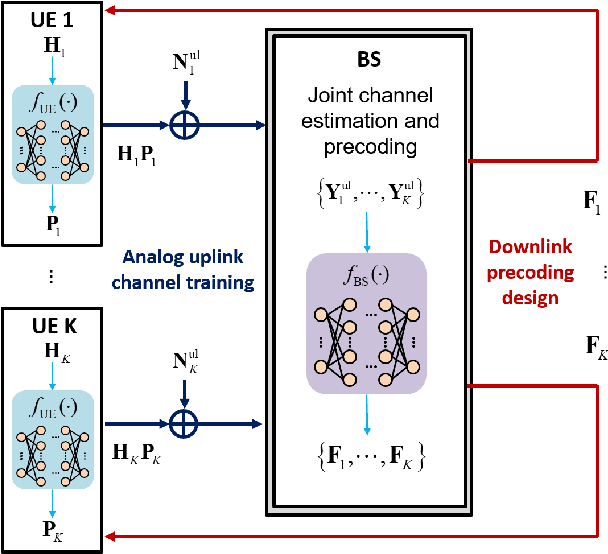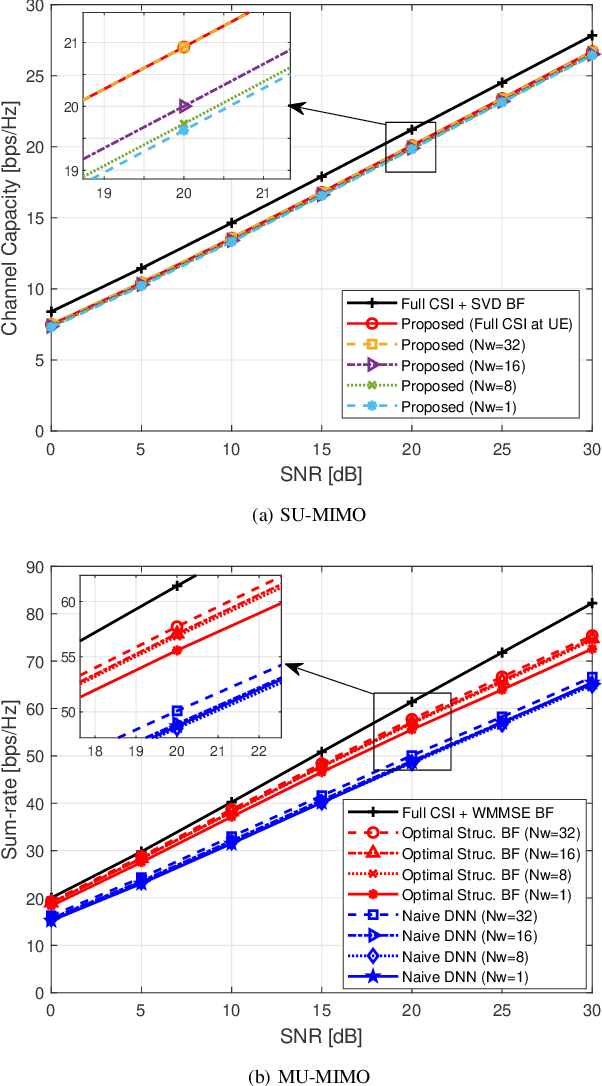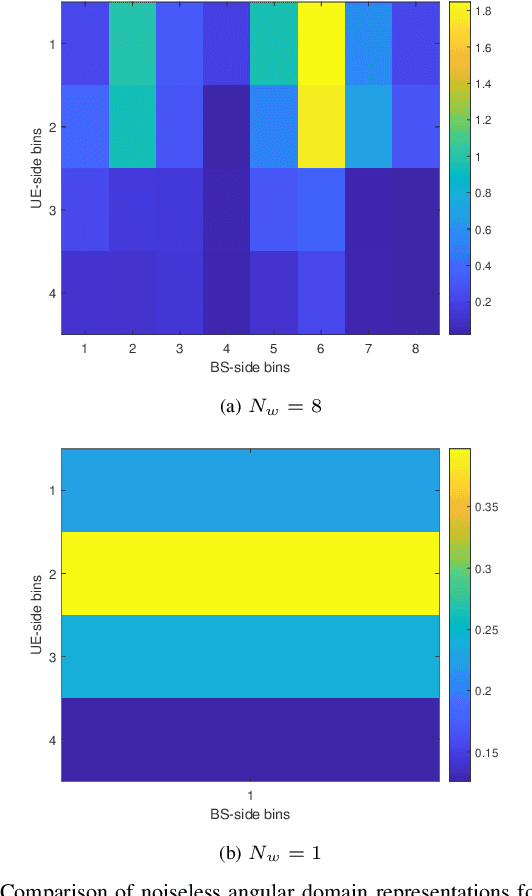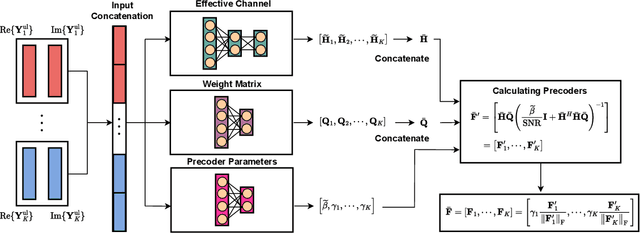Juseong Park
Self-Nomination: Deep Learning for Decentralized CSI Feedback Reduction in MU-MIMO Systems
Apr 23, 2025



Abstract:This paper introduces a novel deep learning-based user-side feedback reduction framework, termed self-nomination. The goal of self-nomination is to reduce the number of users (UEs) feeding back channel state information (CSI) to the base station (BS), by letting each UE decide whether to feed back based on its estimated likelihood of being scheduled and its potential contribution to precoding in a multiuser MIMO (MU-MIMO) downlink. Unlike SNR- or SINR-based thresholding methods, the proposed approach uses rich spatial channel statistics and learns nontrivial correlation effects that affect eventual MU-MIMO scheduling decisions. To train the self-nomination network under an average feedback constraint, we propose two different strategies: one based on direct optimization with gradient approximations, and another using policy gradient-based optimization with a stochastic Bernoulli policy to handle non-differentiable scheduling. The framework also supports proportional-fair scheduling by incorporating dynamic user weights. Numerical results confirm that the proposed self-nomination method significantly reduces CSI feedback overhead. Compared to baseline feedback methods, self-nomination can reduce feedback by as much as 65%, saving not only bandwidth but also allowing many UEs to avoid feedback altogether (and thus, potentially enter a sleep mode). Self-nomination achieves this significant savings with negligible reduction in sum-rate or fairness.
Generating High Dimensional User-Specific Wireless Channels using Diffusion Models
Sep 05, 2024



Abstract:Deep neural network (DNN)-based algorithms are emerging as an important tool for many physical and MAC layer functions in future wireless communication systems, including for large multi-antenna channels. However, training such models typically requires a large dataset of high-dimensional channel measurements, which are very difficult and expensive to obtain. This paper introduces a novel method for generating synthetic wireless channel data using diffusion-based models to produce user-specific channels that accurately reflect real-world wireless environments. Our approach employs a conditional denoising diffusion implicit models (cDDIM) framework, effectively capturing the relationship between user location and multi-antenna channel characteristics. We generate synthetic high fidelity channel samples using user positions as conditional inputs, creating larger augmented datasets to overcome measurement scarcity. The utility of this method is demonstrated through its efficacy in training various downstream tasks such as channel compression and beam alignment. Our approach significantly improves over prior methods, such as adding noise or using generative adversarial networks (GANs), especially in scenarios with limited initial measurements.
End-to-End Deep Learning for TDD MIMO Systems in the 6G Upper Midbands
Feb 01, 2024



Abstract:This paper proposes and analyzes novel deep learning methods for downlink (DL) single-user multiple-input multiple-output (SU-MIMO) and multi-user MIMO (MU-MIMO) systems operating in time division duplex (TDD) mode. A motivating application is the 6G upper midbands (7-24 GHz), where the base station (BS) antenna arrays are large, user equipment (UE) array sizes are moderate, and theoretically optimal approaches are practically infeasible for several reasons. To deal with uplink (UL) pilot overhead and low signal power issues, we introduce the channel-adaptive pilot, as part of an analog channel state information feedback mechanism. Deep neural network (DNN)-generated pilots are used to linearly transform the UL channel matrix into lower-dimensional latent vectors. Meanwhile, the BS employs a second DNN that processes the received UL pilots to directly generate near-optimal DL precoders. The training is end-to-end which exploits synergies between the two DNNs. For MU-MIMO precoding, we propose a DNN structure inspired by theoretically optimum linear precoding. The proposed methods are evaluated against genie-aided upper bounds and conventional approaches, using realistic upper midband datasets. Numerical results demonstrate the potential of our approach to achieve significantly increased sum-rate, particularly at moderate to high signal-to-noise ratio (SNR) and when UL pilot overhead is constrained.
 Add to Chrome
Add to Chrome Add to Firefox
Add to Firefox Add to Edge
Add to Edge